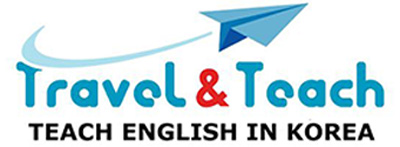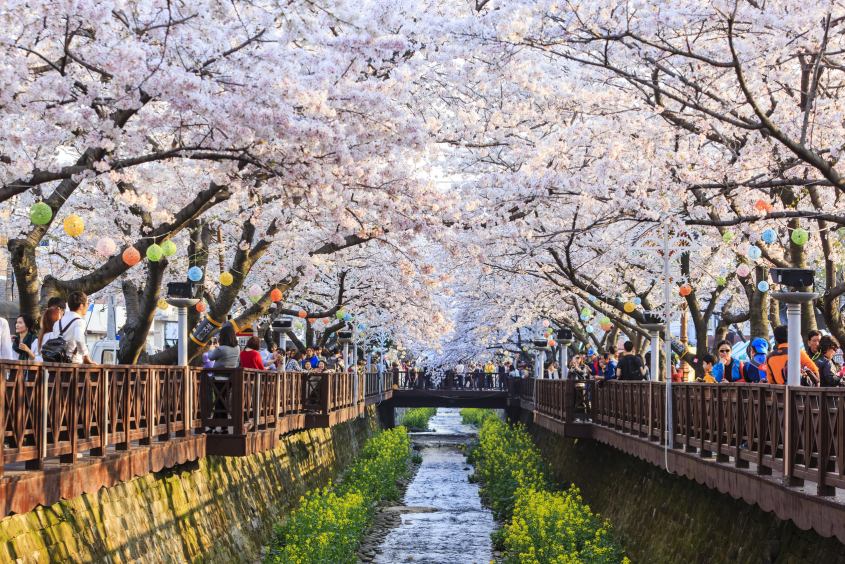Thinking about teaching English in Daejeon?
Daejeon is the fifth largest city in Korea, having a population of close to one and a half million people. It is located centrally in Korea and is attached to Seoul by subway. Daejeon is recognized in Korea as a major hub for research and development as well as for its high level of education.
Landmarks in Daejeon
Mount Sikjangsan: At over 623 meters, Sikjang Mountain is the highest mountain in Daejeon and is considered one of the eight most beautiful sites in the city. Legend has it that Mount Sikjang has water that revives those who drink it.
Mount Bomunsan: Bomun Mountain is located in Daesa-dong in Jung-gu. It boasts 20 springs and 10 hiking trails, which makes it one of the more popular mountains to hike in Daejeon. There are cable cars to take you to the top of the mountain where there are historic monuments as well as Gochuksa, a Buddhist temple.
Mount Gubongsan: Gubong Mountain is known for its beauty, which changes color four times a year with each season. The mountain is turned red by the azalea flower, then green by the lush trees in the summer, and finally golden during the fall, making the scenic view picture perfect.
Yuseong Spa: The Yuseong Spa is famous for having a reputation of providing cures for very specific kinds of ailments. A folk story from the Silla Dynasty has a mother who brought her son who was wounded in battle to the location in hope of finding a cure from the water. The son dipped his arm in the water and went on to a quick recovery. Kings from the next few eras also visited the location and bathed in order to cure themselves in the holy waters.
Yuseong Spa has been renovated in recent years and is now one of the most popular tourist spots in Daejeon, boasting over a hundred luxurious facilities. It is also a perfect place for those teaching English in Daejeon to kick up their heels and relax.
EXPO Park: EXPO Park was originally built for the 1993 Daejeon International EXPO. The park includes one of the world’s largest IMAX theatres, a number of different pavilions, as well as a music fountain.
Daecheong hosu: Daecheong Lake is the third biggest artificial lake in all of Korea. The lake was built in 1980 and has clear water that runs into it from the nearby mountains. The lake is known to be one of the most beautiful sites in all of Daejeon.
Daejeon Zoo: Daejeon Zoo is the second largest zoo in Korea, having an area of over 600.000 square meters. There are 13 different roller coasters and rides, a sculpture park, a green shower forest as well as entertainment facilities for the entire family. The zoo has two safaris, the Mountain and African Safaris, where people can ride in buses around the park to see the animals up close, as well as a collection of 139 different kinds of animals.
Daejeon Philharmonic Orchestra: The Daejeon Philharmonic Orchestra was established in 1984 and has performed over 700 times since then. Various concerts throughout the year are played on special occasions such as Christmas, New Years and Valentine’s Day. The orchestra also holds special concerts for children, adults or for the whole family.
Festivals in Daejeon
Daejeon International Balloon Fiesta: Held every year in Yuseong- gu, Daejeon, the balloon festival attracts large crowds of local people as well as tourists and offers hot air balloon rides in addition to aeronautical performances, stunts, a magic show and even parachute competitions. At night the sky is filled with the colorful balloons while rock bands play a free concert for the crowds.
Sintanjin Cherry Blossom Festival in Daejeon: The Sintanjin Cherry Blossom Festival is the largest festival held in the spring in all of Daejeon. The festival goes on for 3-4 days and offers a variety of contests, such as juggling and painting and even has band performances. Members from the local baseball team, the Daejeon Citizen Football Club as well the local baseball team, the Hanwha Eagles are also participants in the festival.
Uam Cultural Festival in Daejeon: The Uam Cultural Festival is a celebration of Song Si Yeol, who was a leader in education during the Joseon Dynasty and was known to have taught several scholars in that time. In 1683 Song Si Yeol opened a private school which was declared as an important historical site in 1989. The festival offers events such as academic lectures, as well as a handwriting and Chinese poem contest.
Nightlife in Daejeon
WA Bar: This bar is franchised across Korea and is a great spot to get imported beers from around the world. The atmosphere is casual and the beer and other drinks are decently priced.
Watermelon Sugar: Is a bar that is popular with English teachers and other expats in Korea. Watermelon Sugar offers great music and fairly priced alcohol.
Bubi Bubi: One of the few western-style dance clubs in Daejeon, Bubi Bubi is a popular spot for expats and college students living in Daejeon. The cover charge on weekends is 10,000 Won, but this includes all the draft beer that you can drink, making it quite a good deal.
Aram: Offering more of a laid back atmosphere, Aram is located in Dunsang-dong and is a couple of blocks away from Bennigans Restaurant. More of an upscale bar, Aram offers bottles of wine ranging from 30-50,000 Won.
Shisha House: If you are not looking for a bar, but more of a relaxed place to chill out, check out the Shisha House, which is a hookah lounge and café.
Transportation in Daejeon
Due to its location in Korea, being at the crossroads of two major expressways, the Gyeongbu and the Honam Expressway, as well two major railways, the Gyeongbu Railway and the Honam Railway, Daejeon is a major center of transportation in Korea.
If you are teaching English in Daejeon and want to get away for the weekend, the KTX can get you from Daejeon to Seoul in approximately 50 minutes. The nearest airport to Daejeon is Cheongju Airport, about a thirty-minute drive north of the city
If you are looking to travel within Daejeon, the Daejeon Subway is a great option. Operating since April of 2006, Daejeon subway lines 1 and 2 are two of the first of 5 planned lines that will be built in Daejeon.


